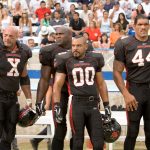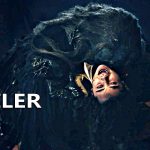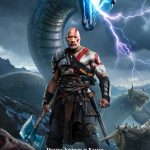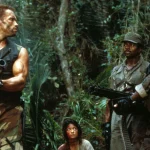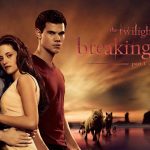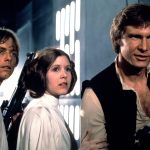Beowulf (2007)
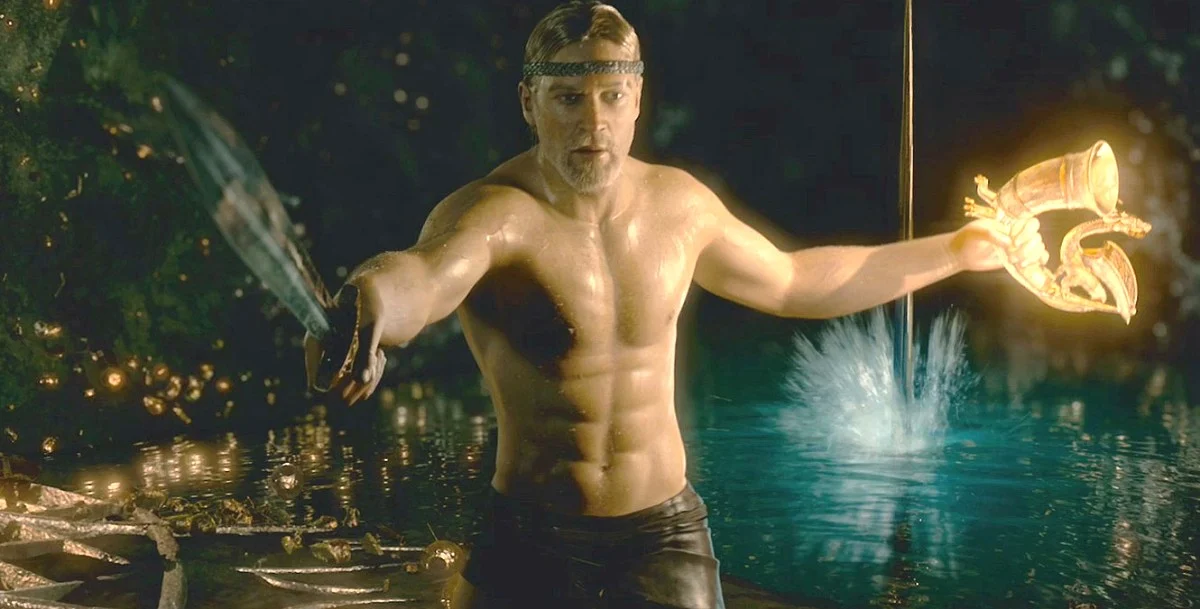
“Beowulf,” directed by Robert Zemeckis and released in 2007, represents a bold and innovative approach to the classic Anglo-Saxon epic poem of the same name. This animated action-fantasy film, with a script adapted by Neil Gaiman and Roger Avary, reimagines the ancient text through a modern lens, blending cutting-edge technology with the rich tapestry of medieval mythology. With a distinguished voice cast including Ray Winstone, Anthony Hopkins, Robin Wright, Brendan Gleeson, and John Malkovich, “Beowulf” stands as a testament to both the enduring power of ancient storytelling and the possibilities of contemporary animation.
The film is set in a fantastical medieval world, focusing on the hero Beowulf (voiced by Ray Winstone), a mighty warrior who comes to the aid of the Danish king Hrothgar (Anthony Hopkins). Hrothgar’s kingdom is under siege by a monstrous creature named Grendel, who has been terrorizing the people and attacking the mead hall of Heorot. Beowulf, driven by a desire for glory and honor, vows to defeat Grendel and save the kingdom.
The narrative follows Beowulf’s epic battle with Grendel, his subsequent confrontation with Grendel’s vengeful mother (voiced by Angelina Jolie), and the personal and moral consequences of his heroic deeds. As Beowulf’s actions lead him to become king and face new threats, the film explores themes of heroism, leadership, and the corrupting nature of power. The plot intricately weaves elements of the original epic with new, modern twists, creating a narrative that is both familiar and fresh.
Robert Zemeckis’s direction in “Beowulf” is characterized by his use of motion capture technology, which provides a unique and visually striking representation of the epic tale. The technology allows for lifelike animation and detailed character expressions, enhancing the film’s immersive quality. Zemeckis’s vision brings a dynamic and visceral energy to the story, capturing the epic scope and dramatic tension of the source material.
The screenplay by Neil Gaiman and Roger Avary adapts the ancient text with a contemporary sensibility, integrating modern themes and character dynamics into the classic narrative. The screenplay preserves the core elements of the epic while adding new layers to the characters and story, making the tale accessible to a modern audience. The dialogue is both poetic and direct, reflecting the grandeur of the original poem and the film’s action-oriented approach.
The film features a stellar voice cast, each contributing significantly to the film’s impact. Ray Winstone’s portrayal of Beowulf is robust and commanding, capturing the character’s physical prowess and internal struggles. Anthony Hopkins’s voice work as King Hrothgar brings gravitas and authority, while Robin Wright’s portrayal of Queen Wealtheow adds depth and emotional resonance.
Brendan Gleeson’s role as the loyal warrior Wiglaf provides a strong supporting performance, and John Malkovich’s voice acting as the scheming Unferth adds complexity and intrigue. Angelina Jolie’s role as Grendel’s mother is particularly notable for its sensual and haunting quality, reflecting both the character’s allure and menace.

The animation in “Beowulf” is a major highlight, showcasing the innovative use of motion capture technology. The film’s visual style combines detailed environments with fluid character movements, creating a visually stunning experience. The motion capture technology allows for realistic portrayals of the characters’ physicality and expressions, enhancing the emotional and dramatic impact of the story.
The film’s design elements, including its dark and atmospheric environments, contribute to the epic and mythical tone. The fantastical creatures, such as Grendel and his mother, are rendered with impressive detail and creativity, adding to the film’s sense of wonder and danger.

“Beowulf” explores several profound themes, including heroism, the nature of leadership, and the corrupting influence of power. The film delves into the complexities of its protagonist’s journey, portraying Beowulf not just as a traditional hero but as a flawed individual grappling with the consequences of his actions. The film’s exploration of these themes provides a contemporary lens through which to view the ancient epic, making its moral and existential questions relevant to modern audiences.
The impact of “Beowulf” extends beyond its narrative and technical achievements. The film represents a significant advancement in animated filmmaking, demonstrating the potential of motion capture technology to create immersive and emotionally engaging stories. It also contributes to the ongoing tradition of reimagining classic literature through new media, bringing the ancient epic to a new generation of viewers.

In conclusion, “Beowulf” is a groundbreaking film that successfully reimagines the classic epic through innovative animation and a contemporary storytelling approach. Directed by Robert Zemeckis and featuring a remarkable voice cast, the film combines technological advancement with deep thematic exploration, creating a visually stunning and thought-provoking adaptation of the ancient text. Its impact on the genre and its contribution to the field of animation underscore its significance as both a cinematic achievement and a modern reinterpretation of a timeless tale. Through its blend of traditional and modern elements, “Beowulf” stands as a testament to the enduring power of epic storytelling and the creative possibilities of contemporary filmmaking.

